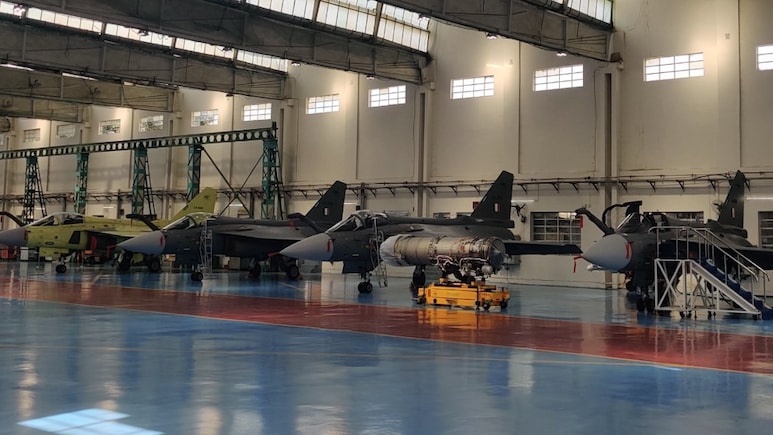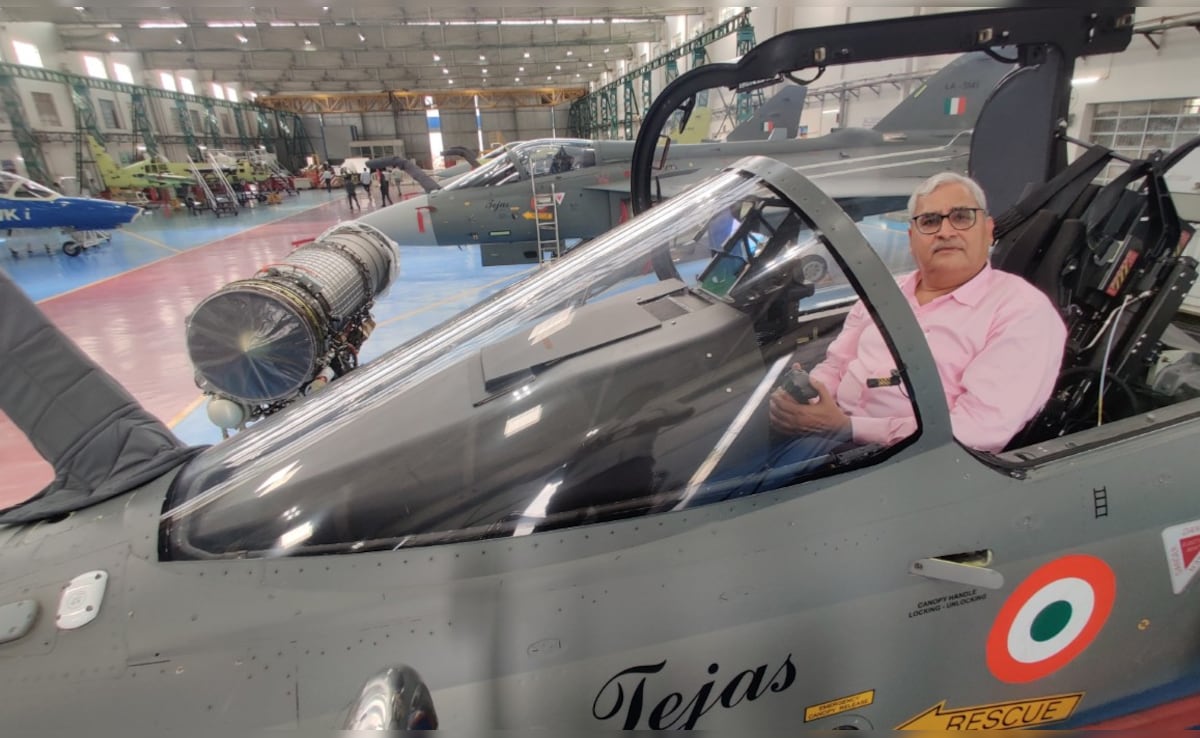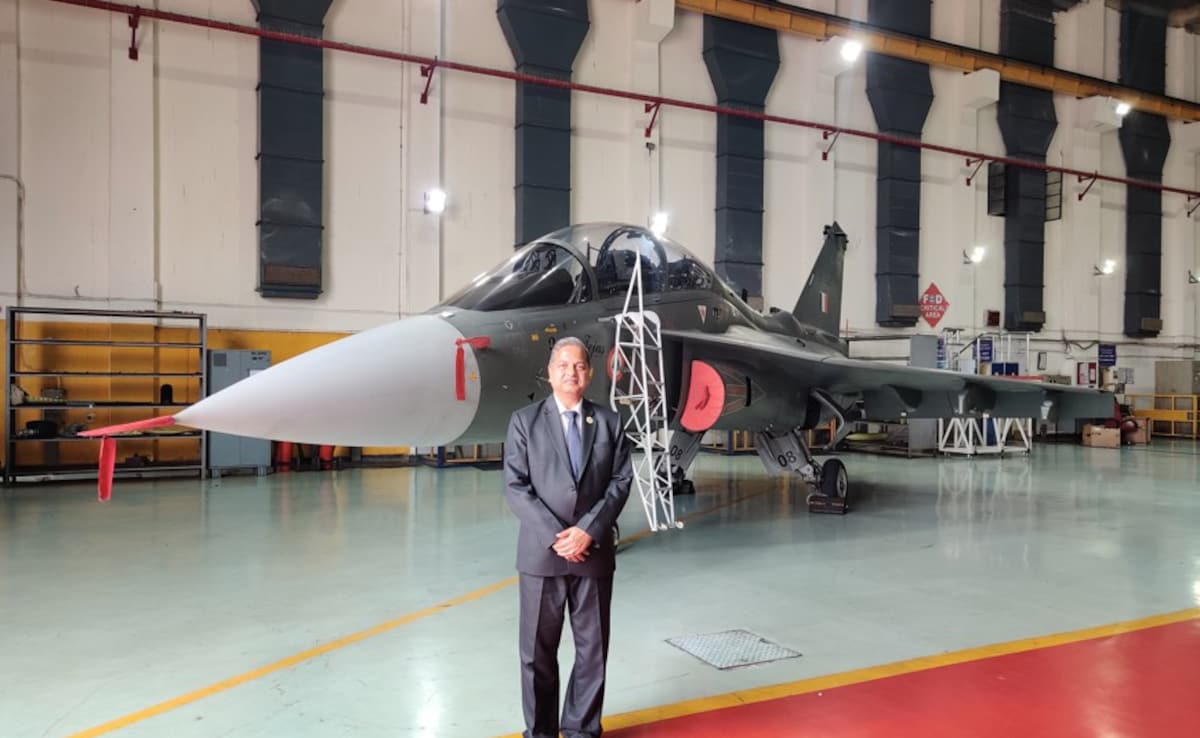
The smell of new paint lingers in the air as rows of Tejas aircraft, the made-in-India fighter jets, are lined on the shop floor of Hindustan Aeronautics Limited (HAL) in Bengaluru, all set to fly.
This reporter, who has tracked Tejas closely, first saw a drab dull brown composite wing being fabricated decades ago in the 1990s in a tiny hangar at India's defence lab.
Today, the planes, numbering approximately 38, are operated by the Indian Air Force in combat roles.
Soon, some 200-plus planes will be on duty guarding India's borders. It has been in the making since 1986 and it made its first flight in 2001.
Standing on the shop floor of Hindustan Aeronautics Limited (HAL) in Bengaluru, NDTV's Science Editor Pallava Bagla witnessed first-hand the culmination of decades of Indian aerospace ambition - the indigenous fighter jet Tejas, now at least nine of them fully assembled and awaiting its final component: the engine.
This reporter has seen the development of Tejas from the time it was called the Light Combat Aircraft (LCA). From a prototype to the pilot seat, NDTV's Science Editor Pallava Bagla chronicles Tejas' rise.

NDTV's Science Editor Pallava Bagla sitting in the pilot's seat of cockpit of the Tejas fighter plane
Dr DK Sunil, Chairman and Managing Director of HAL, in an exclusive interview told NDTV that while HAL has completed the airframes for the current batch of Tejas jets, the delay in receiving engines from American manufacturer General Electric (GE) is holding up delivery to the Indian Air Force.
"We will be fitting the engines onto the aircraft and we are ready to deliver. Today, I think all the aircraft frames are built. The shortfall is on the engine," said Dr Sunil, pointing to the row of Tejas jets lined up in the assembly hangar.
The GE 404 engine, which powers the Tejas, is a high-performance turbofan engine capable of delivering thrust in the range of 70-80 kilo Newton. Despite its proven capabilities, the supply chain bottleneck has become a critical hurdle.
"General Electric has told us that they will speed up the process. But if we had our own indigenous engine, this choke point could have been avoided," Dr Sunil added.

Dr DK Sunil, Chairman and Managing Director, HAL, in Bengaluru with a Tejas plane
This sentiment echoes a long-standing aspiration within India's defence ecosystem - the need for an indigenous jet engine. HAL has already made strides in this direction, designing two engines: one for helicopters and another for the Hawk-class aircraft.
The larger engine, intended for the upcoming Advanced Medium Combat Aircraft (AMCA), is also under active development.
"HAL is also designing two engines of its own. One for the helicopter and one for the Hawk class. The big engine that is currently being discussed for AMCA - that interest and investment is coming today. So, I hope that in the next 10 years, we will have our own engines," Dr Sunil said.
The Tejas aircraft is a 4.5-generation fighter equipped with cutting-edge technologies such as the Active Electronically Scanned Array (AESA) radar, electronic warfare suites, helmet-mounted display systems, and beyond-visual-range missiles.
Its ergonomic cockpit design and advanced avionics make it a pilot-friendly platform with built-in safeguards against operational errors.
"Its flying quality is so good that it will not let you make a mistake. Its software control is so good that even if you make a mistake, it will correct itself," Dr Sunil explained, as NDTV's Science Editor Pallava Bagla sat inside the cockpit of a Tejas fighter - a moment that marked a full-circle journey for him from witnessing the aircraft's early prototypes with half a wing to now experiencing its operational form.
Despite its readiness, HAL's ability to deliver Tejas jets on schedule hinges on the timely arrival of GE engines. The company had committed to delivering 12 aircraft this fiscal year, but may revise the target to 10 due to engine delays.
"For the airframe, our production line is running. And it will keep coming. But the engine is still holding up," Dr Sunil said.
HAL also has other broader contributions to India's defence and aerospace sectors - a portfolio that extends far beyond Tejas.
HAL manufactures a range of helicopters including the Dhruv (utility), Rudra (weaponized), and the Light Combat Helicopter (LCH), with over 350 units deployed across the Army, Navy, Air Force, and Coast Guard.
The company also produces the Hindustan Turbo Trainer-40 (HTT-40) basic trainer aircraft, the Hawk-I upgraded jet trainer, and HAL is actively involved in the Advanced Medium Combat Aircraft (AMCA) fighter jet program in collaboration with Aeronautical Development Agency (ADA) of the Defence Research and Development Organisation (DRDO).
"HAL has a large portfolio of aircraft for the entire aerospace ecosystem, it is made in India today, then it is due to HAL," Dr Sunil said proudly.
The company's commitment to innovation is reflected in its substantial investment in research and development, Rs 3,000 crore annually, which accounts for 8-9% of its turnover.
"R&D is a very big investment for us. Because in the future, it is very important for us to make our own products - be it software or hardware," Dr Sunil emphasised.
As India pushes forward with its Atmanirbhar Bharat (self-reliant India) initiative, HAL's role becomes increasingly pivotal.
The Tejas program, despite its current engine-related bottleneck, stands as a testament to India's aerospace capabilities and the vision of building indigenous defence platforms.
Track Latest News Live on NDTV.com and get news updates from India and around the world

